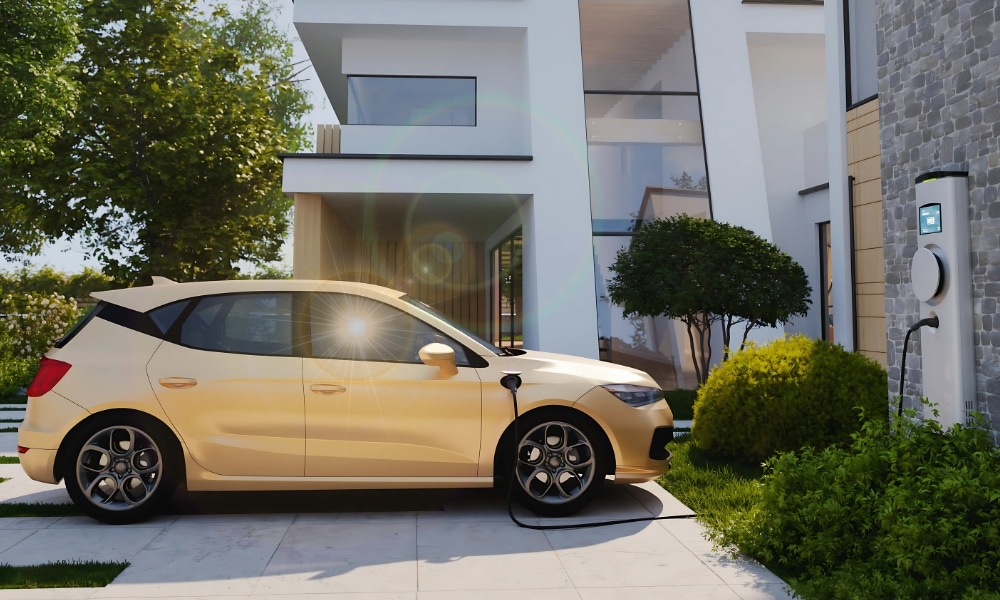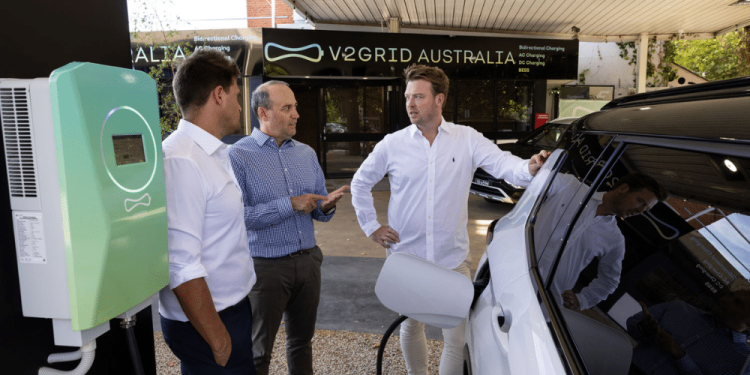V2Grid Australia launches the Numbat bidirectional charger for the Australian market. Source: techAU
Australians are driving headfirst into an electric future, but the real energy revolution is happening quietly in garages and carports around the country. V2Grid Australia has officially secured Clean Energy Council approval for its Numbat bidirectional EV charger, the first standalone device of its kind to be certified in Australia. It is a huge moment for electric mobility, energy flexibility, and everyday households looking to squeeze more value from their clean tech.
This landmark approval marks a turning point for Australian electric vehicle owners. For the first time, households can install a certified charger that not only fills an EV battery but can also send that stored energy back into a home or into the electricity grid. In everyday terms, your EV can now operate like a battery on wheels, supporting your household and the broader grid during high-demand periods.
In a country where rooftop solar dominates and energy prices dance like a yo-yo, this technology could make a real difference.
What the Numbat charger brings to the table
The Numbat is a wall-mounted 7 kW bidirectional charger designed and engineered in Australia. It is fully self-contained, so it can deliver vehicle-to-grid and vehicle-to-home capability without any home battery system. For households wanting the perks of energy storage without the cost of a stationary battery, this is a clever workaround.
Key features include:
- Bidirectional charging that lets you both charge your EV and push energy back into your home or the grid
- A standalone design that removes the need for a home battery
- Dual CCS2 and CHAdeMO compatibility, currently unmatched in Australia
- Locally developed software engineered specifically for Australian conditions
The hardware and software were created in partnership with InfyPower, with V2Grid’s engineering and control systems built in South Australia. This attention to local standards, climates, and grid conditions helps deliver a product ready to meet Australia’s unique energy challenges.

For V2Grid co-founder Matt Downie and the team, the achievement represents a major milestone in unlocking EVs as mobile energy assets. The Numbat makes it possible for drivers to power their homes, support the grid, and better utilise stored solar energy, all from one compact unit.
“The ability to access both vehicle-to-grid and vehicle-to-home technology is a real game changer for those looking to take full advantage of their PHEV or EV. V2Grid Australia is proud to deliver this product to market and anticipates significant interest based on initial feedback and pre-orders,” stated Matt Downie.
What V2G means for Australian households
Vehicle-to-grid sounds like jargon, but the idea is straightforward. Your EV stores energy. When electricity prices rise or demand spikes, you can use that stored energy at home or export it.
And that opens the door to genuine household benefits.
Cutting energy bills
If you charge your EV using off-peak power or rooftop solar, then discharge during peak periods, you can avoid expensive peak electricity costs. With some Australian regions seeing peak rates that triple the off-peak price, the savings can add up.

Adding new income opportunities
As V2G programs roll out, households may receive payments or credits for exporting energy from their EV during peak periods. Think of it as getting rewarded for helping stabilise the grid. With the growing number of EVs in Australia, even small exports can make a big difference during heatwaves or evening surges.
Household backup during outages
Vehicle-to-home capability lets your EV step in as emergency power. Whether it is keeping the fridge running during a blackout or powering essentials through a storm, your car becomes a reliable backup source. This is especially valuable for regional households, storm-prone areas, and anyone wanting extra resilience.
What V2G means for the electricity grid
Australia’s energy grid is transforming at a record pace. Rooftop solar leads daytime generation, coal plants are retiring, and renewables are climbing. Balancing supply and demand is becoming more complex, and this is where V2G shines.
Reducing evening demand peaks
The evening peak is a major grid challenge. Solar drops off, demand rises, and stress builds. EVs connected to bidirectional chargers can discharge energy at these times, helping ease pressure and reducing reliance on expensive peaking plants.
Reducing wasted solar
Australia often curtails clean solar because the grid cannot always take it. EVs can soak up that surplus solar during the day and store it for use at night or during demand spikes. This helps maximise the value of renewable energy that would otherwise be wasted.
Supporting a smarter, more flexible energy system
The future grid will rely on millions of small, flexible energy assets working together. Every EV linked to a bidirectional charger becomes part of a large, distributed battery network. It is more resilient, scalable, and cost-effective than centralised solutions alone.
A local company leading a nationwide transition
V2Grid Australia, founded by electricians Matt Downie and James Murray, has secured a site in Wingfield, South Australia, for local assembly, helping build local manufacturing and clean-energy jobs. Their goal is simple: integrate EVs into the energy system in a way that lowers costs, boosts reliability, and supports Australia’s clean-energy future.
The certification of the Numbat charger is more than a first. It signals the beginning of a new era where Australian households can become active energy participants instead of passive consumers. With the technology certified and ready for installation, there is no doubt that vehicle-to-grid capability will play a growing role in Australia’s energy landscape.
For households looking to save money, improve resilience, and support the grid, V2G offers a powerful new opportunity. And with Australian innovation leading the charge, the future looks bright.
















